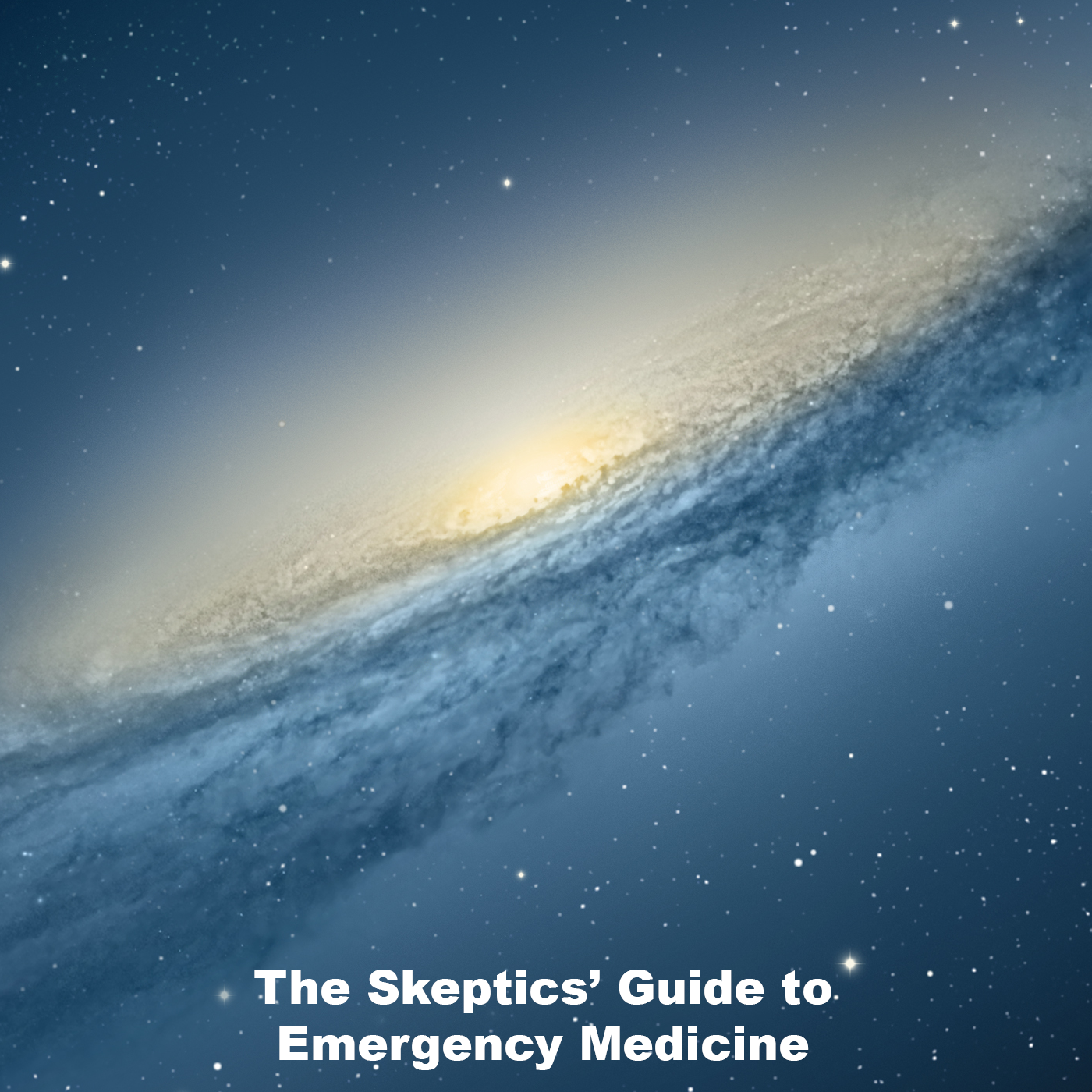

The Skeptics Guide to Emergency Medicine
Dr. Ken Milne
Meet ’em, greet ’em, treat ’em and street ’em
Episodes
Mentioned books

Jul 27, 2024 • 30min
SGEM#448: More than A Feeling – Gestalt vs CDT for Predicting Sepsis
Dr. Justin Morgenstern, an emergency physician and the mastermind behind www.First10EM.com, dives deep into the complexities of sepsis prediction. He questions the efficacy of traditional screening tools like qSOFA and MEWS, advocating for the critical role of clinical judgment. The conversation highlights notable findings from a study involving over 2,500 patients that challenges the need for immediate antibiotics. Morgenstern emphasizes the importance of reevaluating current practices to better enhance patient outcomes in emergency settings.

Jul 20, 2024 • 25min
SGEM#447: Just What I Needed – Preoxygenation Prior To Intubation
Dr. Aine Yore, an experienced emergency physician and healthcare policy advocate, discusses the critical topic of preoxygenation in airway management for ill patients. She dives into the PREOXI trial, comparing non-invasive ventilation methods like CPAP against traditional strategies, revealing insights into hypoxemia rates. The conversation highlights the complexities of intubation strategies, challenges in measuring clinical outcomes, and the promise of non-invasive ventilation to enhance safety during emergencies. Family communication amidst urgent care is also emphasized.

Jul 13, 2024 • 36min
SGEM#446: Finding Pneumo…nia in Febrile Infants
Dr. Christina Lindgren, a Pediatric Emergency Medicine Attending at Children’s National Hospital, delves into the nuanced diagnosis of pneumonia in febrile infants. She highlights the rarity of radiographic pneumonia and the critical role of shared decision-making with families. Discussion on viral testing reveals challenges in identifying bacterial infections amidst viral overlaps. Innovative diagnostic methods like ultrasound are explored, alongside the complexities of differentiating pneumonia from bronchiolitis, making the episode a rich source of insights for healthcare professionals.

Jul 6, 2024 • 47min
SGEM#445: Why Can’t We Be Friends – Conflict in Emergency Medicine
Dr. Lauren Westafer discusses conflict in emergency medicine, focusing on a case of discharged patient without antibiotics causing conflict with their primary care provider. Topics include workplace rudeness, professional bias, clinician conflicts, effective communication strategies, interdisciplinary collaboration, and managing conflicts at individual, team, and institutional levels.

Jun 30, 2024 • 22min
SGEM Xtra: When I’m 64 – Old Fashioned Doctors
Dr. Fernada Bellolio, a Mayo Clinic speaker, joins Dr. Herbert L. Fred, an author known for his insights on traditional medicine, in a lively discussion. They explore the humorous and often critical perceptions of 'old-fashioned' doctors through a Monty Python skit. The conversation dives into the pitfalls of 'eminence-based medicine' versus evidence-based practices. They also reflect on generational divides in medical care, advocating for personalized treatment and emphasizing timeless principles of patient-centered care.

Jun 22, 2024 • 24min
SGEM#444: I Need Oxygen…But How Much Oxygen for Critically Ill Children
Dr. Anireddy Reddy, a pediatric intensive care attending physician at Children’s Hospital of Philadelphia, dives into the intricacies of oxygen therapy for critically ill children. The discussion highlights a case of a 3-year-old girl with severe respiratory distress, emphasizing careful assessment instead of knee-jerk reactions to low oxygen levels. Dr. Reddy examines a recent clinical trial on conservative versus liberal oxygenation strategies, revealing critical insights about patient outcomes and health disparities in oxygen monitoring.

Jun 15, 2024 • 46min
SGEM#443: Don’t Stop Me Now – REBOA for Hemorrhage Control in Trauma Patients?
Dr. Rob Leeper, an intensivist and trauma surgeon at Western University, discusses the innovative use of REBOA for hemorrhage control in trauma cases. He analyzes a gripping clinical scenario involving a severely injured patient and emphasizes the complexities of implementing this technique. The dialogue dives into the recent UK-REBOA trial outcomes, highlighting concerns about efficacy, patient data analysis, and biases. Furthermore, Leeper sheds light on the impact of financial conflicts on study results and mortality rates, urging careful evaluation in trauma care strategies.

Jun 8, 2024 • 0sec
SGEM#442: I’m on the Right Track Baby I Was Born This Way
Dr. Kay Dingwell, a rural emergency physician specializing in gender-affirming care, discusses the urgent need for specialized healthcare for transgender and gender-diverse patients. She highlights the challenges faced by a non-binary youth seeking emergency care while navigating hormone treatments. The conversation covers clinical guidelines and a systematic review aimed at improving emergency services for this community. Dr. Dingwell advocates for cultural competency among healthcare providers, emphasizing actionable recommendations to enhance inclusivity and sensitivity in emergency settings.

Jun 1, 2024 • 0sec
SGEM#441: Searching Searching for the best Clinical Decision Rule to Detect Pediatric C-Spine Injury
Dr. Caleb Ward, a pediatric emergency medicine expert and professor, dives into the complexities of detecting cervical spine injuries in children. He discusses a case involving a young boy hurt in a fall and the challenges of diagnosing pediatric C-spine injuries. The conversation highlights the impact of unreliable clinical decision rules and the low prevalence of such injuries. Dr. Ward emphasizes the balance between effective imaging and the risk of unnecessary procedures, exploring ongoing research to improve care and safety for young patients.

May 25, 2024 • 0sec
SGEM#440: I’m Gonna Need Someone To Help Me – GRACE4 AUD and CHS Management in the ED
Dr. Bjug Borgundvaag, Founding Director of the Schwartz/Reisman Emergency Medicine Institute, dives into critical topics in emergency care. He discusses the GRACE-4 guidelines for managing Alcohol Use Disorder and Cannabinoid Hyperemesis Syndrome, emphasizing evidence-based approaches and reducing stigma. The importance of patient voices in developing clinical guidelines is highlighted to enhance care quality. Additionally, he shares insights on managing alcohol withdrawal, advocating for a compassionate and informed approach to treatment.


